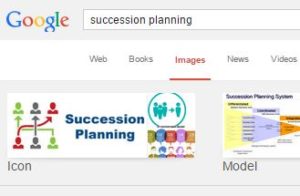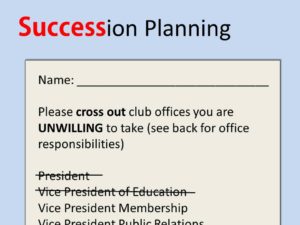“You can talk about ‘Succession Planning’” said the person in charge of the conference. My first thought was Ugh! That sounds boring! Fortunately, the allotted time for the topic was only 5-7 minutes early in the morning and the audience was a couple hundred positive Toastmaster club officers. I challenged myself to deliver useful content, on what I considered a dry subject, in an engaging way.
Have you ever needed to do that? Perhaps you had to report on results? Train prescribed content?
Here are 6 ways you can make that boring topic more interesting:
- Know the WHY for your audience
- Borrow ideas from others (research)
- Engage with relevant humor and stories
- Reduce Content
- Involve the audience
- Offer practical action steps
Know the WHY for your audience
Consider your material from your audience’s perspective. Why is it important to them? Spell out the benefits near the start. For this presentation to Toastmasters, I was very familiar with the group, so it wasn’t too difficult to come up with the “Why.”
Why example:
If you do not know your audience well, consider conducting informational interviews. Last week I had a presentation on business storytelling for a marketing subgroup of the Minnesota Telecomm Alliance, an organization I knew very little about. About a week and a half before the presentation, I conducted short phone interviews with six of the attendees about some of the challenges they faced. I was then able to focus on their “Whys” that my workshop could address.
Borrow ideas from others (research)
Informational interviews are one way to research. Online searches are another. You also can do “field research.” Once, when I was preparing to give a presentation to an association of school lunch administrators and workers, I decided to have lunch with my high school son at his school. I honestly was amazed at how much better school lunches were than when I was a student. For the talk on succession planning for Toastmaster clubs, I posted the topic on the Toastmasters International Members Facebook group and asked about best practices. I got some great ideas and inspiration from the comments. You also can, of course, do a Google search. When you do a Google search on a topic, don’t forget to do an image search for ideas (but don’t just copy and paste–there may be copyright issues).
Engage with relevant humor and stories
Find something off-beat or funny that is relevant. Look at opposite meanings, or different perspectives. For the succession planning topic, I noticed that the word “succession” has the root “success.” Although that wasn’t funny, I got to thinking about the opposite of success, failure and it struck me that often, when something is a failure, it “sucks.” So, bad succession planning is SUCKSession planning. This led to a funny visual that got a lot of laughs.
If you are having trouble thinking of relevant humor, don’t forget your own stories of failure (i.e. self-deprecating humor). Stories do not have to be funny to be engaging. You can tell a cautionary tale, too. “A fact wrapped in story is 22 times more memorable.”–Jerome Bruner, psychologist
Reduce content
You don’t have to tell them everything. Prioritize the information. Break it down into an overview of “steps” or “actions.”
Example of overview:
Involve the audience
Involving the audience can take many forms. The easiest form is simply to ask questions. If you have time, you can have the audience brainstorm, discuss, do an activity or write something down.
Offer practical action steps
The audience needs to use your information. You can help them by giving them steps or practical ideas. For example, in the succession planning presentation, I offered several ideas to prime members to consider being a club officer. One idea was to pass out a list to the members with all the offices listed and ask them to cross out the ones they were unwilling to take.
Take these tips and go from boring to bravo in your next presentation on a “dry” topic!







More great content, so thanks for sharing.
I noticed the red “No” symbol was very slightly non-circular, which I’ve seen several people do recently. So you might be interested in this video that shows how to get a perfect circle every time (as well as an easy way to centre it while you draw it – rather than having to do that separately afterwards).